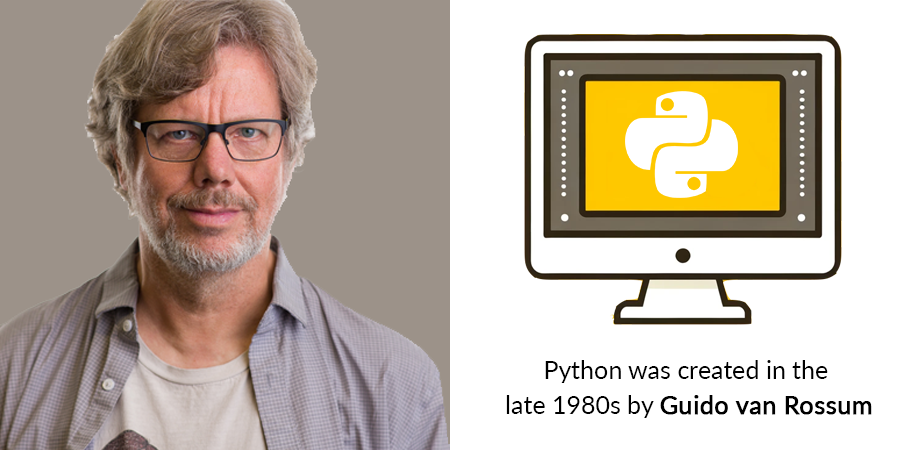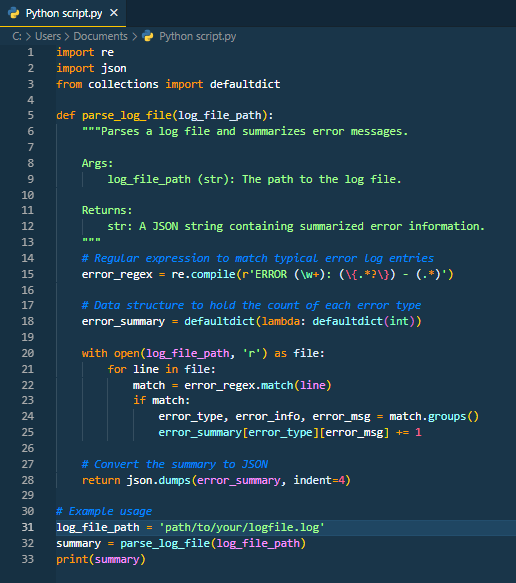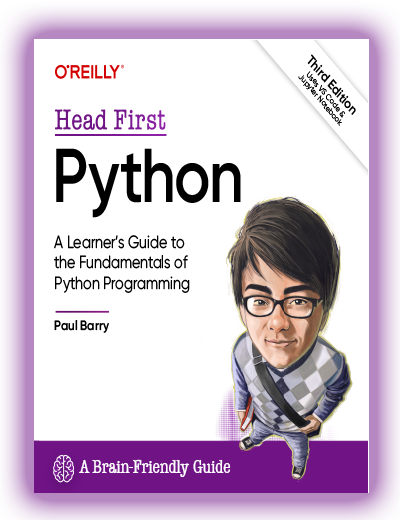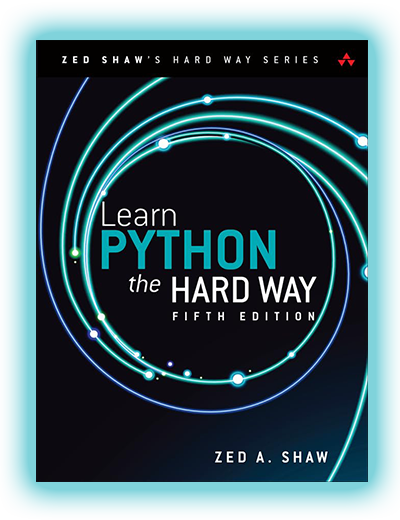Listen to the article - it is faster than reading!
Python is a high-level, interpreted, general-purpose programming language, renowned for its code readability and a syntax that allows programmers to express concepts in fewer lines of code. The Python programming language supports multiple programming paradigms, including procedural, object-oriented, and functional programming. Thanks to its flexibility, this programming language is used in a wide range of fields, from web development to scientific research.
What is Python?
Python is considered a multiparadigm language, meaning it supports various approaches to programming. It is equipped with dynamic typing, automatic memory management, and a comprehensive standard library that is automatically included in all installations.
Python is especially valued for its conciseness and ease of learning, making it an ideal choice for beginner programmers, as well as its power and flexibility for solving complex tasks.
When Was Python Created?
Python was created in the late 1980s by Guido van Rossum in the Netherlands as a successor to the ABC language. It was first introduced to the public in 1991 with the release of version 0.9.0. Since then, Python has undergone numerous changes and improvements, grown in popularity, and now occupies one of the leading positions among programming languages in the world.

Guido van Rossum
It's worth noting that Van Rossum continued to be the principal author of the language until 2018, maintaining the philosophy of simplicity and code readability.
Overview of Python Version Release History and Key Features
| Version | Release Date | Notable New Features |
| 1.0 | January 1994 | Initial release of Python. |
| 2.0 | October 2000 | List comprehensions, garbage collection system. |
| 2.5 | September 2006 | Conditional expressions, the with statement, the any() and all() functions. |
| 2.7 | July 2010 | Dictionary and set comprehensions, format method enhancements, memory view object. |
| 3.0 | December 2008 | Print function, view objects for dictionaries, a new syntax for integer division, emphasis on Unicode. |
| 3.4 | March 2014 | Enumerations, statistics module, improved asyncio library. |
| 3.6 | December 2016 | Formatted string literals, underscores in numeric literals, improved asyncio module, secrets module. |
| 3.7 | June 2018 | Data classes, async/await in comprehensions, breakpoint() function. |
| 3.8 | October 2019 | Assignment expressions (walrus operator), positional-only parameters, f-strings support for self-documenting expressions and debugging. |
| 3.9 | October 2020 | Dictionary merge & update operators, new string methods, type hinting generics in standard collections. |
| 3.10 | October 2021 | Structural pattern matching (match statement), precise types, parenthesized context managers. |
| 3.11 | October 2022 | Significant performance improvements, exception groups, TOML module in standard library. |
| 3,12 | October 2023 | Enhanced usability with significant improvements in f-strings, filesystem support, performance boosts in several modules |
What Can You Do With Python?
This language is used for developing complex websites, conducting scientific experiments, analyzing big data, creating machine learning systems, developing games, and much more. Its application in scientific research and data processing makes it a sought-after tool in academic circles and the industry.
What is Python used for?
- Web development. Creating web applications using frameworks such as Django and Flask.
- Scientific research. Data analysis, signal processing, statistical analysis with SciPy, NumPy.
- Machine learning and artificial intelligence. Developing machine learning algorithms using TensorFlow, PyTorch.
- Game development. Creating games and graphics using libraries like Pygame.
- Automation and scripting. Automating routine tasks and processes.
How to Use Python?
Using Python effectively involves mastering its versatile applications and understanding its powerful simplicity:
- Start by installing Python and setting up your development environment, such as IDLE or an integrated development environment (IDE). For example, PyCharm, which provides code suggestions and debugging tools.
- Begin with basic syntax and gradually explore Python's extensive standard library. It offers modules for everything from mathematical computations to web development.
- Practice writing scripts for automating mundane tasks, or delve into data analysis using libraries like Pandas and NumPy.
- Engage in community projects or open-source contributions to refine your skills.
- Always keep experimenting with new libraries and frameworks, and stay updated with the latest Python developments to enhance your coding proficiency and tackle complex problems efficiently.
What is Python Programming?
Python programming stands out for its simplicity and efficiency. It allows developers to focus on solving problems, rather than the complexities of syntax or memory management. Python code is usually more compact compared to other programming languages, making programs easier to read and maintain.
This programming language also supports test-driven development and can be integrated with other languages, providing greater flexibility to projects.
What is Python Coding? Characteristics and Examples
Python code is characterized by strict indentation rules, which are used to define code blocks. This contributes to code readability and structure. Here is an example of a simple Python program that prints "Hello, world!":

Simple example
Here's an example of a more complex Python program that demonstrates the use of functions, conditions, and loops. The program is designed to search for prime numbers in a given range and display them on the screen.

Example of a more complex Python program
Here's an example that incorporates multiple elements, such as file operations, data processing using regular expressions, and organizing data into a structured format (JSON). This Python script reads a log file, extracts error messages, and summarizes them into a JSON format by the error type and counts occurrences.

Example that incorporates multiple elements in Python
These examples illustrate the language's simple syntax, making it accessible for beginners and efficient for developing complex projects.
How to Code in Python?
Coding in Python is a journey that opens up a world of possibilities in web development, data analysis, artificial intelligence, and beyond. This programming language is celebrated for its simplicity and readability, making it an excellent choice for beginners and a powerful tool for experienced developers.
Firstly, install Python from the official website, ensuring you have the latest version. Then, familiarize yourself with Python's syntax by writing simple programs. Begin with 'Hello, World!' to understand the structure of a script. Next, explore variables, data types, and operators to manipulate data effectively.
Mastering control structures, such as loops and conditional statements, is crucial for building complex logic in your programs. Grasp the importance of functions for modular and reusable code. Delve into Python’s extensive standard library and third-party modules to leverage pre-built functionalities, saving time and effort.
Lastly, practice is key to proficiency. Engage in small projects, contribute to open-source, or solve problems on coding platforms. Remember, coding in Python is not just about syntax; it's about thinking logically and solving problems creatively.
How to Learn Python? Training Recommendations
Learning Python isn't just about immersing yourself in syntax and programming basics, but also about developing the ability to solve real-world problems through code. Here are some recommendations that will help you in this process:
- Mastering the Basics and Syntax
- Official Python Documentation. Start with learning the basic concepts and syntax of the language.
- Interactive Learning Platforms. Platforms such as KnowledgeHut, Udemy, and Coursera offer Python courses ranging from the basics to advanced topics.
- Practice and Projects
- Mini-Projects. Developing small projects allows you to apply theoretical knowledge practically.
- Participation in Open Source Projects. Contributing to open projects on GitHub not only helps improve your programming skills but also provides insight into real software development work.
- Continuous Learning and Skill Improvement
- Study advanced libraries like Pandas for data analysis, Django or Flask for web development, and TensorFlow or PyTorch for machine learning.
- Regularly Solving Programming Challenges. Platforms like LeetCode and HackerRank offer numerous programming challenges that help enhance problem-solving skills and algorithmic thinking.
- Engaging with the Community
- Participation in Forums and Communities. Stack Overflow and Reddit (r/learnpython) can help find answers to questions, share your own experiences, and find like-minded individuals.
How Long Does it Take to Learn Python?
Achieving an intermediate proficiency level in Python typically requires 3 to 6 months of regular study. However, everyone's journey is unique, and learning pace depends on many factors, including prior programming experience and the amount of time dedicated to learning.
Learning Python is an ongoing process. Set real projects and goals for yourself, continue to practice and learn, and over time, you will notice significant improvement in your skills.
Conclusion
Python will continue to solidify its position as one of the world's leading programming languages, thanks to its versatility, power, and accessibility. Its simplicity in syntax makes it an ideal choice for both novice programmers and experienced developers. The vast application spectrum of Python extends from web development to scientific research, data analysis, machine learning, automation, and much more.
As the world becomes more data and technology-dependent, Python promises to play an even more significant role in the future. Its flexibility and scalability allow it to adapt to new technological trends and market needs, from cloud computing to the Internet of Things (IoT) and cybersecurity, highlighting its importance as a universal tool for innovation and development.
Ultimately, the continuous evolution of Python, supported by its community and broad range of applications, ensures that it remains at the forefront of programming and technology. This makes Python not just a programming language but a powerful tool capable of shaping the future of the digital era.
FAQ Section
Question 1: What tasks can be solved with Python?
It is used for web development, data analysis, scientific research, task automation, game development, and much more.
Question 2: Which companies use Python?
Large technology companies such as Google, Facebook, Instagram, Spotify, and Netflix actively use this language in their projects.
Question 3: Is Python suitable for beginners?
Yes, thanks to its simple syntax and a vast amount of learning resources, it is ideally suited for beginner programmers.
Question 4: What makes Python popular?
Its ease of learning, flexibility, powerful libraries, and active community make it one of the most popular programming languages.
Question 5: What resources help in learning Python?
The official Python documentation, online courses, interactive platforms, specialized books, and open-source projects are considered excellent resources for learning the language.
Question 6: What can you do with Python programming?
With Python, you can create websites, develop applications, automate tasks, and analyze data. This language is ideally suited for prototyping thanks to its simplicity and flexibility. Python is widely used in scientific research, machine learning, system administration, and many other areas. With its vast community and libraries, you can implement almost any idea that comes to mind.





